I love a good DIY project to save a few bucks, but some things are best left to the professionals. For projects like painting or installing a new dryer, I’ll gladly complete them myself. However, more invasive projects require additional tools and know-how to be completed safely and correctly.
To remove vermiculite insulation on your own, you need to understand the safety considerations, necessary tools, and feasibility of removing vermiculite insulation.

It is dangerous to remove vermiculite insulation as a non-professional because it may contain asbestos. It is possible with the correct equipment and safety measures, but it may be just as expensive as having it professionally removed.
Safety of DIY Removal of Vermiculite Insulation
The first consideration you must make before DIY-ing anything in your home is your safety. The greatest risk of vermiculite insulation is if it contains asbestos.
70% of all vermiculite sold in the United States during the years 1910-1990 was sourced from a mine near Libby, Montana. Vermiculite from Libby was used to manufacture the vast majority of insulation during this time, often under the brand name Zonolite.
Unfortunately, this mine also contained a deposit of asbestos, so the vermiculite was unknowingly contaminated.
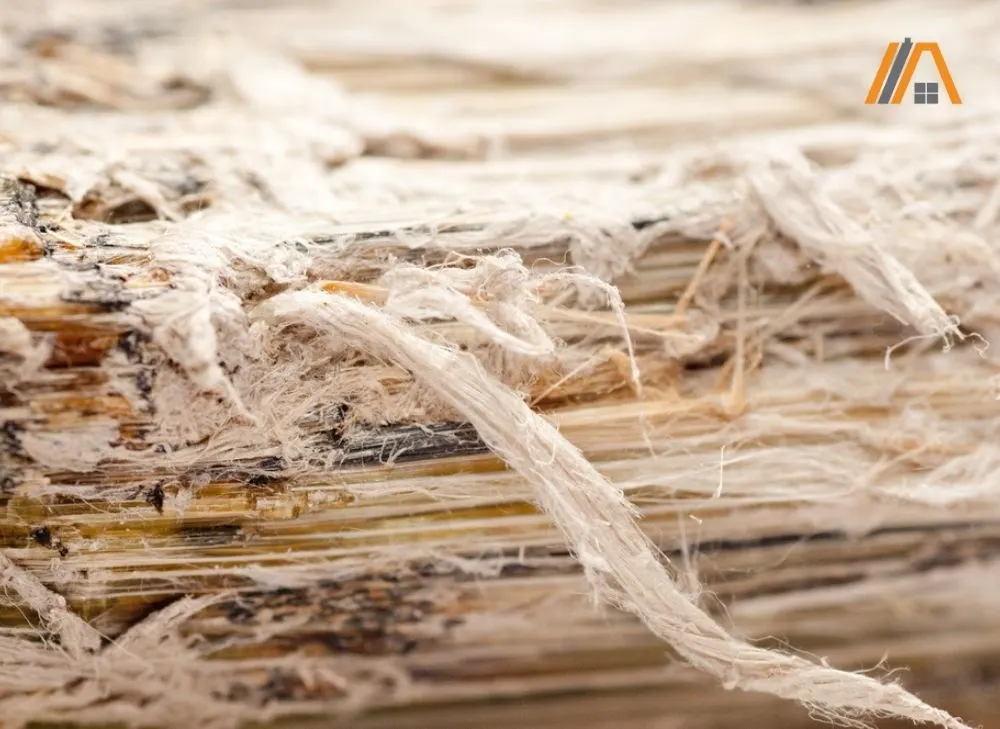
The specific variety of asbestos is known as tremolite-actinolite series asbestos or Libby Amphibole asbestos (LA).
It wasn’t until 1984 that the mine was closed, and not until 1999 that the EPA responded to health concerns about asbestos contamination of the surrounding area.
If you live in North America and your vermiculite insulation was installed anytime in the 20th century, it is highly likely that it contains asbestos.
You should be aware of the dangers related to asbestos exposure before coming into contact with your vermiculite insulation.
Asbestos Exposure Health Risks
The health risks associated with asbestos exposure have been thoroughly researched in the past 100 years. When asbestos fibers become airborne, they can be inhaled by humans and cause damage to your health.
Asbestosis is a chronic lung disease. It is caused by long-term exposure to asbestos. The airborne fibers scar lung tissue, leading to pain and limiting how much oxygen can be absorbed in the alveoli of the lungs.
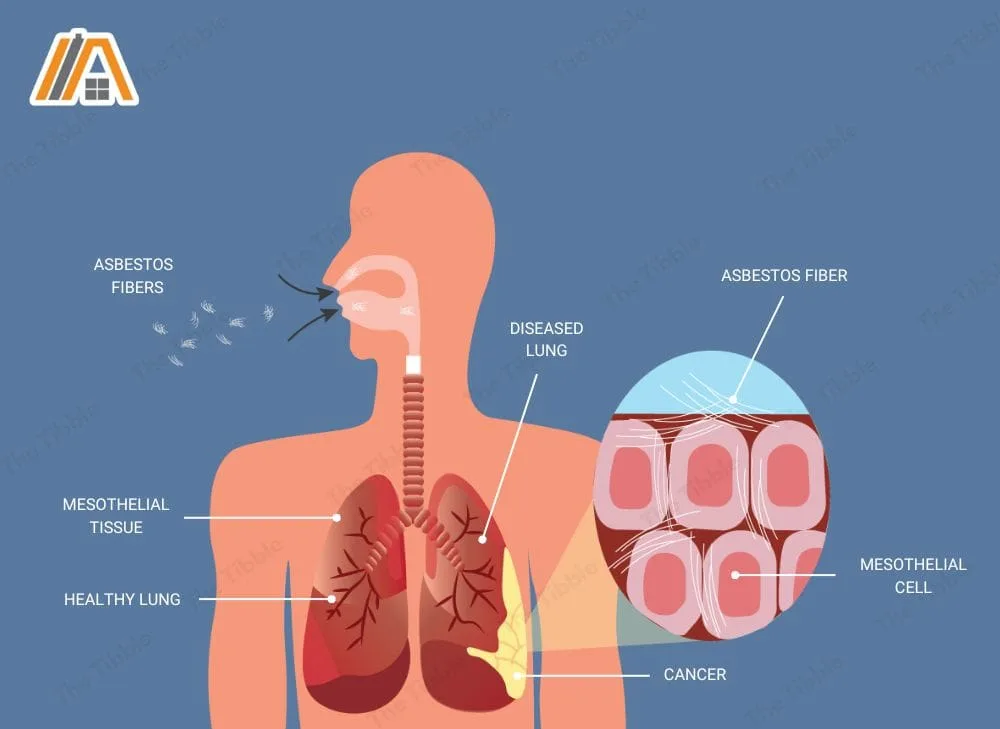
Asbestosis symptoms may be mild at first and often do not become apparent until years later. Symptoms of asbestos exposure include the following:
- Shortness of breath
- Lingering cough
- Fatigue
- Chest pain
- Swollen fingertips
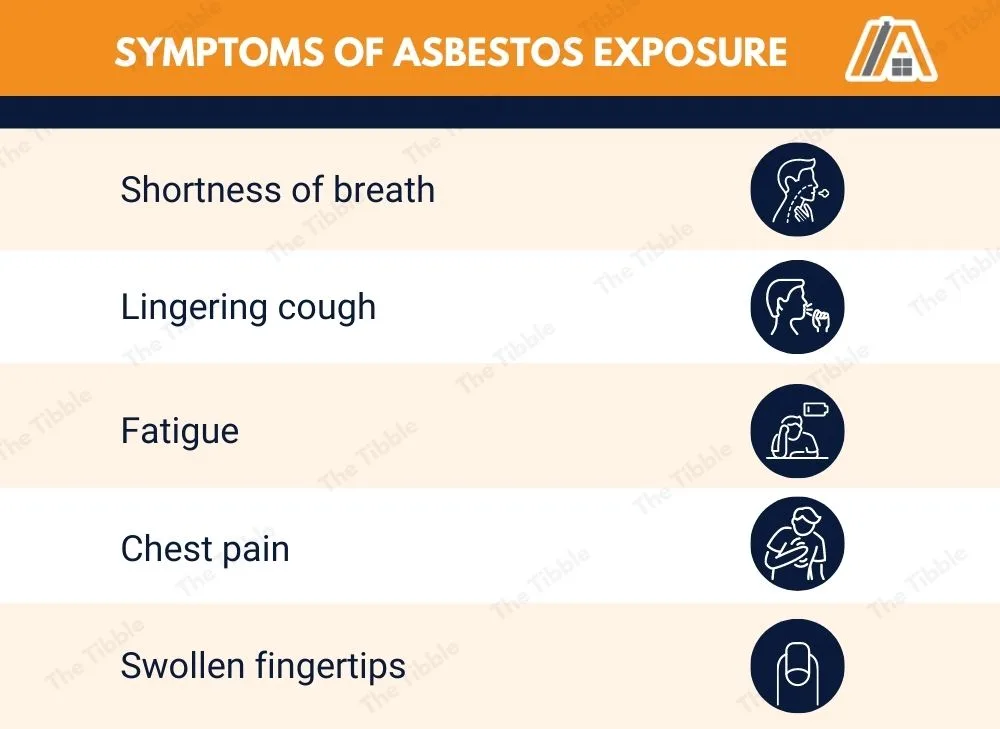
Exposure to asbestos also increases the risk of lung cancer. Years of inflammation and scarring can result in DNA mutations that lead to abnormal cell growth.
Since the use of asbestos has now been regulated by the federal government, it is highly unlikely to contract asbestosis in your daily life—unless you do some such as removing old, contaminated insulation.
Establish if the Insulation Contains Asbestos
Before proceeding with a DIY removal of vermiculite insulation, the first issue is determining if the insulation is asbestos-free.
Before being processed, asbestos looks like a silvery gray rock crystal with closely threaded fibers attached to it. However, once it is processed with vermiculite into insulation, it is harder to identify.
The asbestos can appear as fluffy white tufts, or it may be colored with the vermiculite during manufacturing.
You must have the insulation professionally tested to determine whether or not it contains asbestos. Places such as Home Depot and Amazon sell home test kits for asbestos, but in testing the insulation, you may expose yourself to harmful particles.
The EPA encourages people to hire a professional testing firm. In the US, the average cost of asbestos testing is between $225 and $800.
The testers collect a sample of the insulation, then take the sample to a lab for testing with methods such as polarized light microscopy.
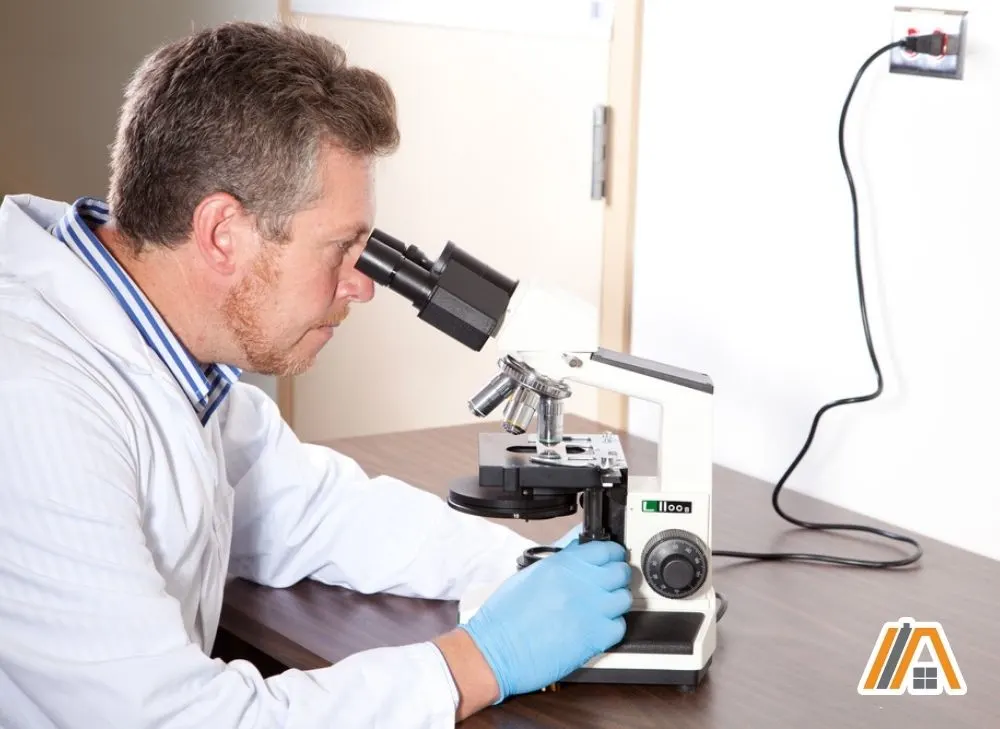
The test will take an hour or two to complete at your house, and the laboratory analysis will take 3-10 days for results.
A laboratory test is very reliable as it is done by professionals. However, at-home kits are far less reliable. Asbestos can shift within the insulation, so if you do not sample from the right part of the insulation, there’s a chance you won’t find asbestos, even if it is in the insulation.
The recommendation is to leave vermiculite asbestos alone if it has not been tested to be asbestos-free. Since the majority of vermiculite insulation was contaminated during the 1900s, it’s better to be safe than sorry.
Only Attempt DIY Removal if Asbestos-Free
You should not attempt to remove asbestos-contaminated materials on your own. There are specific procedures that must be followed to safely remove asbestos, and it is best left to the professionals.
Asbestos removers must wear PPE to prevent them from coming into contact with the asbestos, and they must thoroughly wet the material so that fewer asbestos particles fly into the air.
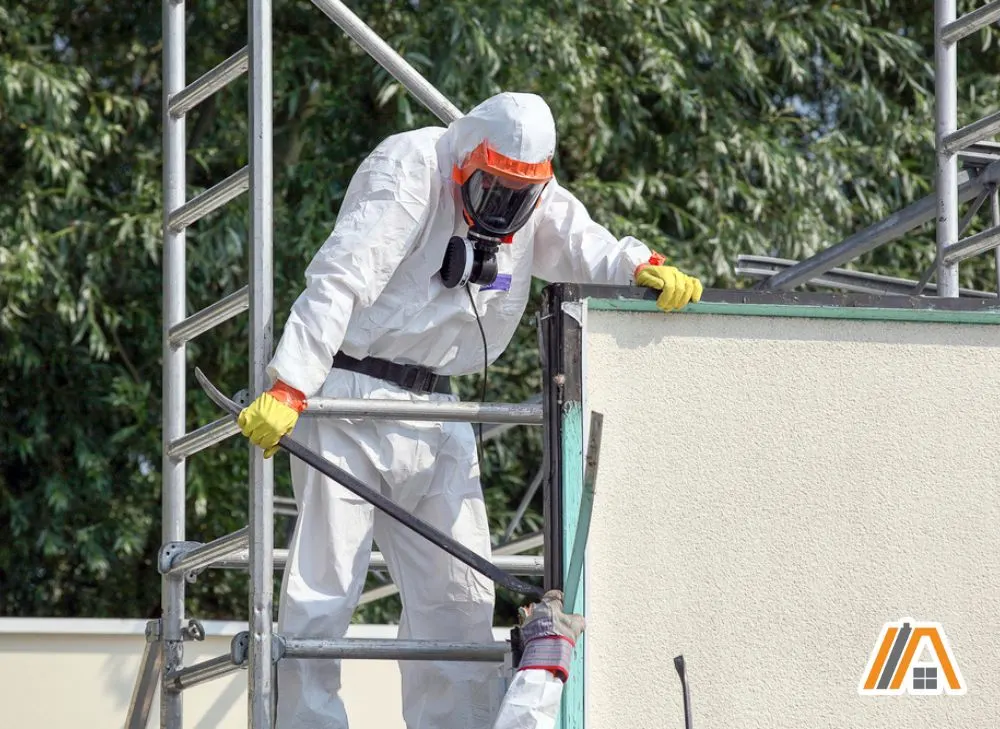
Any particles that are released during this process can remain airborne and cause harm to the lungs. Trained professionals are far better at preventing this from happening during and after removal, so they are the better option for removing insulation with asbestos.
Other Safety Risks
Once you’ve determined that your insulation is asbestos-free, you’re still not in the clear yet. There are other safety concerns as well.
Vermiculite itself has not been shown to cause health issues through respiration. However, other particles in the insulation can cause harm.
Vermiculite insulation is most likely decades old, as it went out of use in the 90s. There could be dust particles and mold spores that are not safe to be inhaled.
If your home suffered any water damage over the years, you should especially be on the lookout for mold. Make sure to remove the insulation completely and disinfect your home after to ensure that mold spores haven’t been released into the air.
You should wear proper PPE, such as dust masks and lightweight work gloves, even if you know that the vermiculite does not contain asbestos.
Feasibility of DIY Vermiculite Removal
You Would Need the Proper Equipment
First of all, you will need the PPE described above. A 20-pack of masks costs $30, and gloves start at $10.
You also must wear long sleeves and long pants, both made of thick material to prevent particles from coming through, and both ideally cinched at the cuff.
Now, onto equipment for the actual insulation removal. A commercial-grade insulation removal vacuum is needed to remove loose insulation.
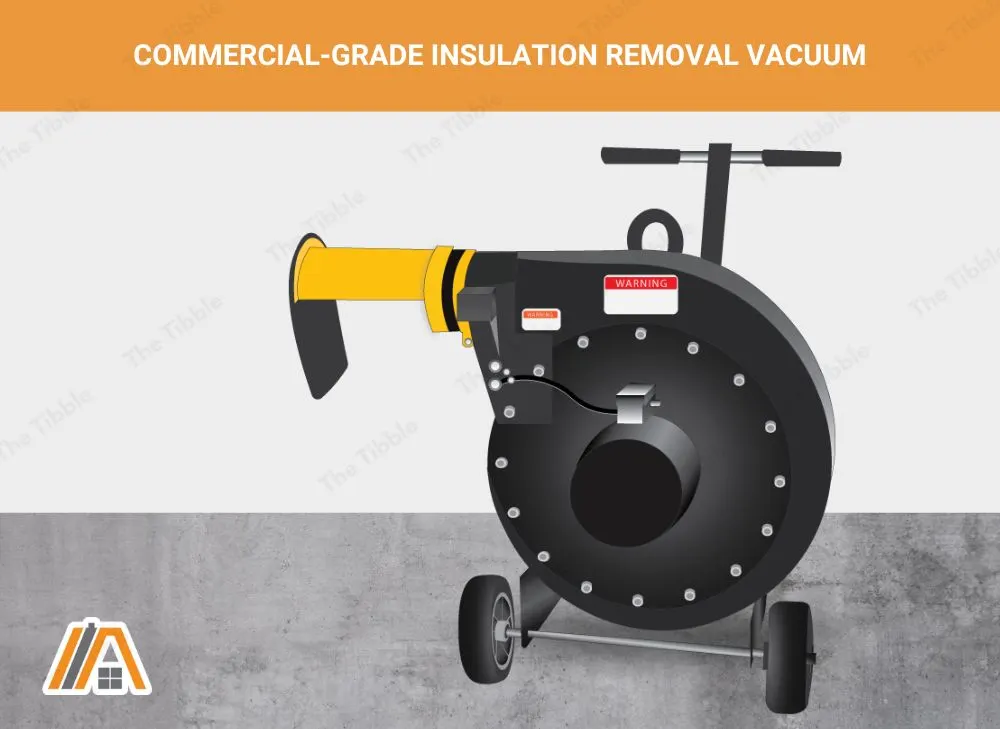
These vacuums cost anywhere from $3,000 to $7,000, so it is not reasonable to buy one of your own. Rentals will cost you about $300 a day or $800 a week. You will also need insulation vacuum bags to hold all the vermiculite it sucks up. Finally, you’ll need to rent a dumpster, which costs anywhere from $600-$800. In total, renting the equipment alone costs about $1,000. This doesn’t even take into account the time you’ll be spending to remove the insulation yourself.
Access Can Influence the Removal Process
Access can influence the removal process as well. If damaged insulation is behind drywall, you may have to remove perfectly fine drywall to get to it.
It will be an additional expense to purchase tools to tear down the drywall, as well as replace it with new drywall.
Vermiculite insulation in your attic is most likely uncovered, but it might be a challenge to get up there and reach all the crevices, depending on the shape of your attic.
It Has to Be Disposed of Properly
Once the vermiculite is out of your walls, you’re not necessarily done with it; you have to dispose of it properly as well.
As described above, you will need to get insulation vacuum bags as well as a dumpster to put the insulation in. There will most likely be too much to fit in your normal garbage can.
According to Waste Management and Graham Road Recycling and Disposal Facility, “all vermiculite must be disposed of using the same standards that apply to asbestos-containing materials.”
The standards include that the material must be sufficiently wet, sealed in leak-proof containers, and properly labeled. There are specific disposal sites for asbestos-containing materials, so be sure to research the closest one to you.
Disposing of the vermiculite could incur additional costs, as mentioned above concerning the dumpster and possible additional fees at the disposal site. A professional remover would take care of this for you as part of their services.
Consider Laying New Insulation Over Vermiculite
An easier solution to removal would be simply laying new insulation over vermiculite. Energy Star states that it is safe to put old insulation over new insulation as long as the old stuff isn’t wet.
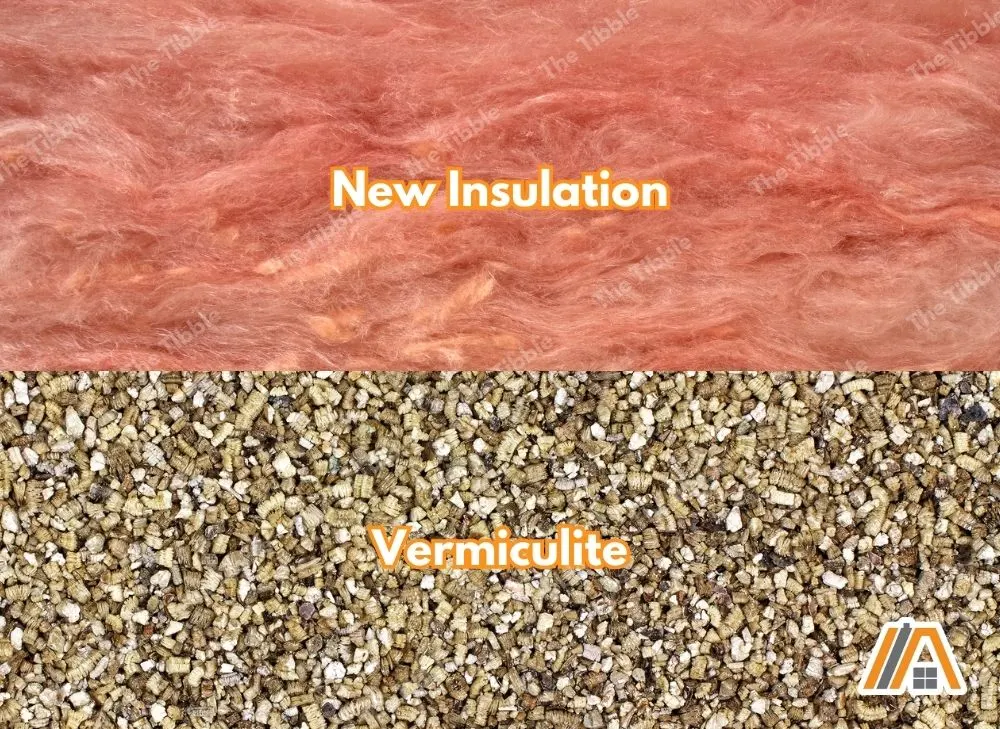
However, some places may prohibit this if the vermiculite may contain asbestos. Blowing in, or even simply putting in, new insulation can disturb the vermiculite below and cause particles of asbestos to become airborne.
Advantages
- Saving money. You will save yourself thousands of dollars by not removing the insulation.
- Ease. We’ve discussed that insulation removal isn’t an easy process; laying new insulation on top is certainly easier.
- Preventing immediate harm. Since removing vermiculite can be dangerous, not messing with it can prevent you from causing yourself immediate harm.
Disadvantages
- It doesn’t get rid of the problem. Eventually, you may still need to remove the vermiculite if it becomes damaged or starts to escape from the attic. You would then have to remove both layers of insulation.
- Health concerns. Since the possibly asbestos-contaminated insulation is still in your home, it could still cause health concerns in the future if it is disturbed.
- Moisture/mold. If there is any moisture or mold growth in the old insulation that you don’t know about, it will also contaminate the new insulation.
Sources
https://cumulis.epa.gov/supercpad/SiteProfiles/index.cfm?fuseaction=second.cleanup&id=0801744
https://www.nhs.uk/conditions/asbestosis/
https://spokanecleanair.org/wp-content/uploads/Vermiculite.pdf
